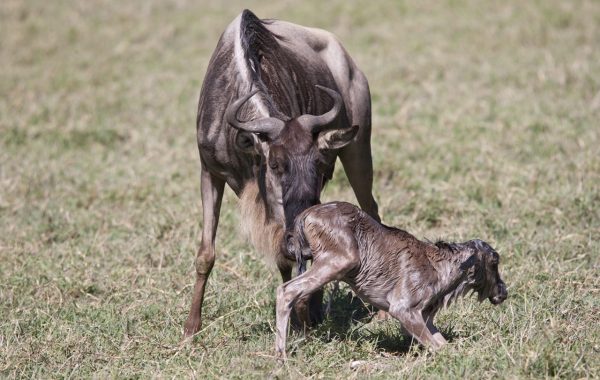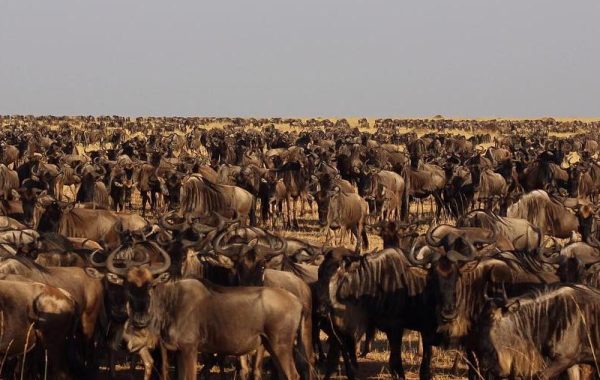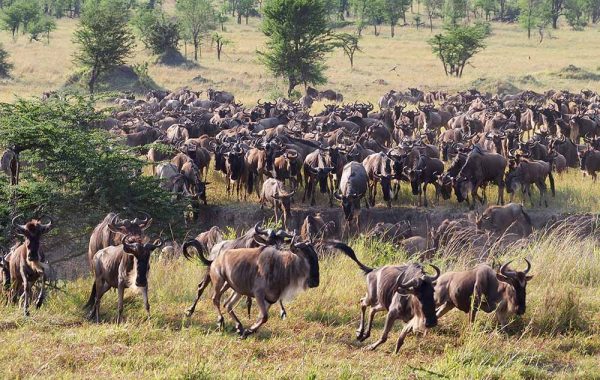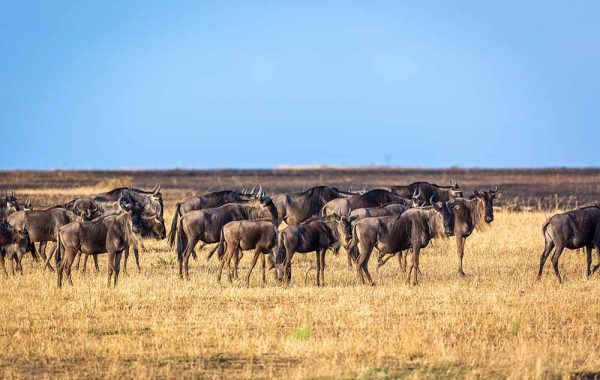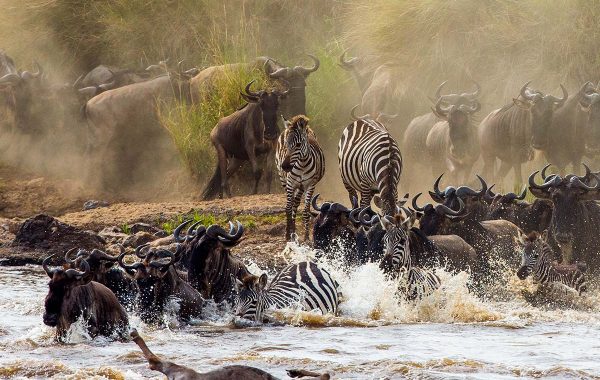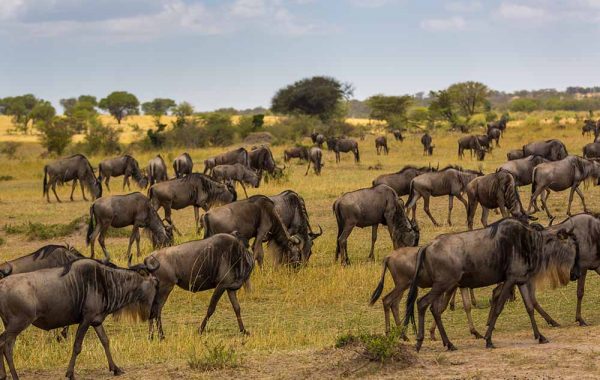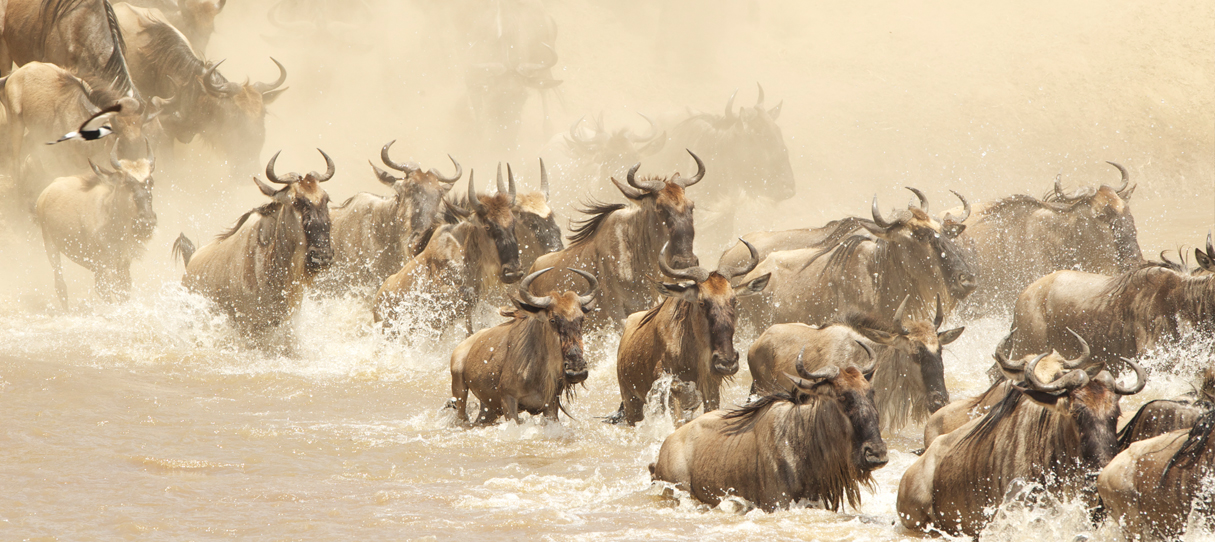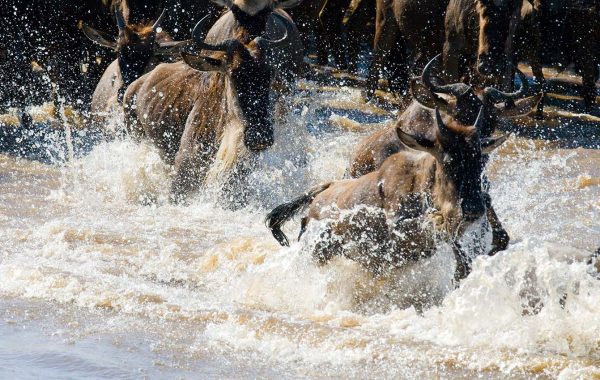Great Wildebeest Migration Highlights
OVERVIEW
The Great Migration is like a massive wildlife parade, where more than a million animals march in a big circle across the Serengeti area. Picture herds of wildebeest leading the way, followed by zebras, gazelles, and other animals, all on a quest for food and water. It all starts with baby animals being born in the southern part of Tanzania’s Serengeti near Ngorongoro. Then, they all move together in a loop, heading north through the Serengeti and into Kenya’s Masai Mara, only to return later in the year.
This journey is full of excitement and danger. Predators like lions and cheetahs lurk nearby, hunting for their next meal, while new babies are born, keeping the cycle of life going strong. It’s a natural spectacle that shows the incredible power of nature and how animals adapt to survive in the wild.
Great Migration Seasons
The Great Migration in January, February and March
Around January each year, the migration will be finishing a southward trek, moving along the eastern edge of the Serengeti and into the Ngorongoro Conservation Area. Here the plains are rich in nutritious grass, providing the herds with the best conditions for raising their newborn calves.
Although there is no real beginning or end to this migratory circuit — other than birth and death — it seems reasonable to call the wildebeests’ birthing season the start of the migration. Around late January or February, the herds occupy the short-grass plains that spread over the lower northern slopes of the Ngorongoro Crater highlands and around Olduvai Gorge. Some 400,000 calves are born here within a period of two to three weeks, or nearly 8,000 new calves every day.
The Great Migration in April and May
After bearing their young in February and March, around April the wildebeest herds begin to drift northwest toward the fresher grass of the central Serengeti, drawing with them thousands of zebra and smaller groups of antelope. By May, columns of wildebeest stretch for several kilometres as the animals start to congregate by the Moru Kopjes. Mating season begins toward the end of May and male wildebeest battle head-to-head. Throughout ‘the rut,’ the journey continues at leisure with the wildebeest, zebra and gazelle grazing as they go along. Gradually, the movement gathers momentum and the wildebeest start to mass in the Serengeti’s Western Corridor. The herds form in huge numbers along the pools and channels of the river, which they have to cross in order to continue on their journey. This may not be as spectacular as the famous Mara crossings, but there are still enough wildebeest to provide the Grumeti crocs with a veritable feast.
The Great Migration in June and July
During June, the dry season starts with large concentrations of wildebeest in the Western Serengeti and on the southern banks of the Grumeti River. Each migrating animal must face the challenge of crossing the crocodile-infested river — the first of many daunting and tense river encounters.
As June moves into July, the hundreds of thousands of wildebeest and zebra continue to head north along the western edge of the park toward an even riskier barrier: the Mara River in the north of the Serengeti. These river crossings are arguably one of the most exciting wildlife events on Earth. They usually begin at the onset of high season in July, but timing all depends on nature.
The herds will typically be found in the Northern Serengeti in the month of July,
The Great Migration in August, September and October
By August, the herds have faced the challenge of crossing the Mara River. In years when the river is in full flow, the panic and confusion at the crossings — combined with waiting predators and surging currents — can cause massive loss of life. But, even in years of relatively gently flowing water, the crocs take their toll, not to mention the lions and other large predators that patrol the banks, ready to ambush any wildebeest that make it to the other side. There is no single crossing: at some spots, there are just a few individuals, while others see a mass of animals moving without break for hours.
By September to October, the main chaos has ended and the migrating columns have gradually moved eastward. However, they wildebeest will face the heavy waters of the Mara River once more as they prepare to cross once again for their return journey southward.
The Great Migration in November and December
After the East African short rains in late October and early November, the wildebeest move down from Kenya and into the eastern limits of the Serengeti past Namiri Plains, an area known for outstanding cheetah sightings. By December, they are spread throughout the eastern and southern reaches.
In the early months of the new year, the grasses in the deep south of the Serengeti are lush with rain. This draws the herds of wildebeest and hundreds of thousands of zebra and other plains animals. The cycle continues as the calving season starts once again.
MIGRATION MAP



